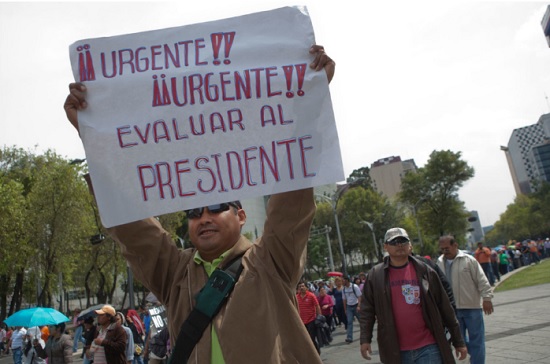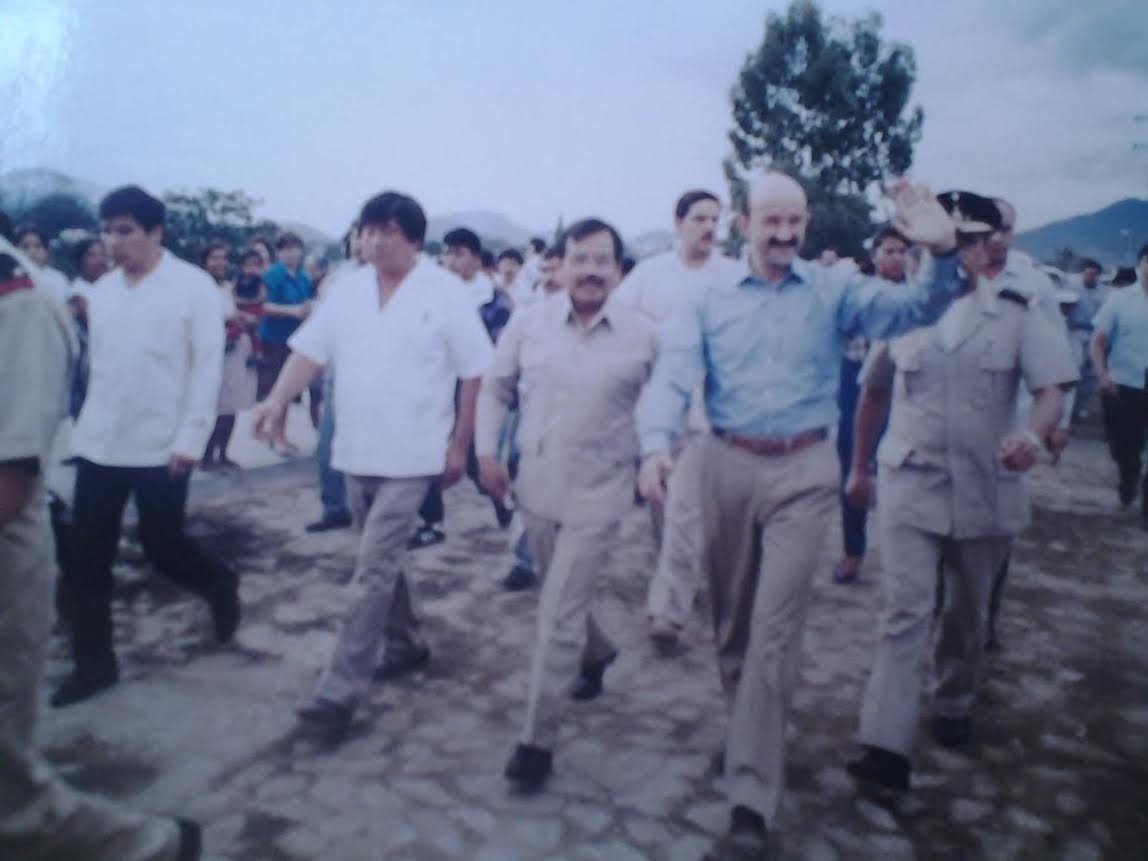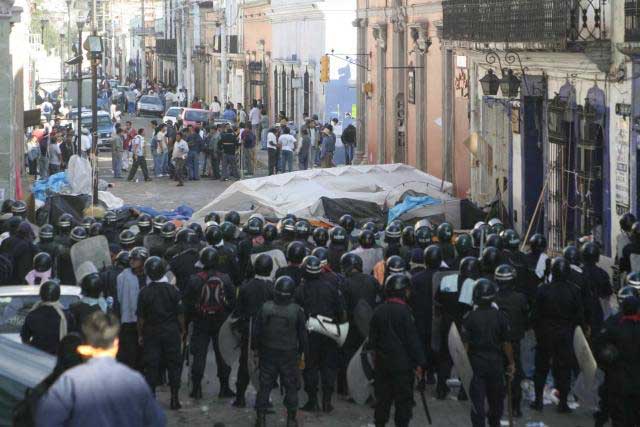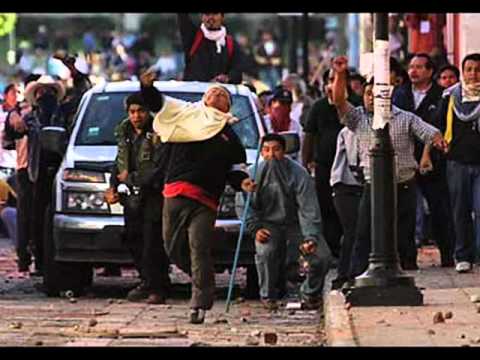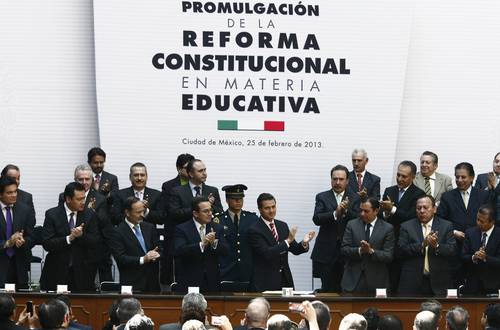Ten years ago, right at the end of President Vicente Fox’s administration, Mexican society was electrified by the explosive struggle of Oaxaca’s teachers against neoliberal education reforms. These reforms include mandatory teacher evaluations many educators slam as punitive and unresponsive to needs in rural areas.
What began as a teachers’ protest turned into a mass movement of Oaxacan society against neoliberalism and the brutality of the Mexican state.
Over the course of six months of struggle in the face of intense repression, the movement — dubbed the “Oaxaca Commune” — captured the world’s imagination and led to the ouster of the state’s governor.
But it all started 30 years ago, during the governorship of Heladio Ramírez, who took office on December 1, 1986, and signed a national letter stating that Oaxaca would be the only state in the country that would not accept the federal government intervention to carry out their own educational mechanisms, leaving education at the state level in the hands of the CNTE teachers union and particularly in the hands of the famous (or infamous) section 22.
For eighteen years the CNTE gained strength and became a powerful independent union, feared by the state government, until 2004, when Ulises Ruiz Ortiz from the PRI was sworn in as the new governor of the state of Oaxaca.
2006
The education conflict in Oaxaca as we know it today began on May 22, 2006, when the teachers of Section 22 of the National Union of Education Workers (SNTE), headed by Enrique Rueda Pacheco, asked to improve the quality of Oaxacan schools in rural areas. They demanded justice from the state government, and about 80 thousand teachers marched through the city streets. A couple of thousand decided to settle in the main plaza indefinitely, scaring away toursts, littering and giving a bad image to the historic center.
On June 14, 2006, Ulises Ruiz ordered hundreds of police to evict the teachers using tear gas and rubber bullets. Given the violence of most agents of the state forces, teachers responded with stones and sticks and forced the withdrawal of the police. This attempt of eviction sparked a wave of protests inside and outside the state of Oaxaca against the use of public force to silence social manifestations.
On June 15, the Oaxacan authorities released 11 detained teachers, and a commission was created after an agreement emerged in a dialogue between federal and local authorities with SNTE in Oaxaca. Teachers demanded the resignation of Governor Ulises Ruiz Ortiz and decided to stay in the main plaza of the city of Oaxaca, supported by the APPO (Popular Assembly of the Peoples of Oaxaca), an organization that was assembled in that year in response to the political situation in the state of Oaxaca.
On October 28, 2006, the APPO declared a “maximum alert” to the possibility of armed clashes restarted, and after the day of violence that took place in the state capital. Ulises Ruiz, unable to resolve the conflict, formally and urgently requested President Vicente Fox for the intervention of the Federal Preventive Police (PFP).
On October 29, federal forces entered Oaxaca with the mission of evicting the demonstrators from the historic center. After breaking the barricades using anti-riot vehicles, truck-mounted water cannons and tear gas, the tally was three people dead, and the teachers still occupy the Oaxaca main plaza up to these days.
2013
Since 2013, the teachers associated with Oaxaca’s Section 22 have struggled alongside teachers from Guerrero, Michoacán, Chiapas, and Tabasco against the neoliberal structural reforms of Mexican President Enrique Peña Nieto. The teachers present the only unified challenge to the reforms. The reforms were passed in February 2013.
2016
In 2016, under the rubric of “reform” and “accountability,” Mexican teachers are facing a raft of proposals from the government of President Enrique Peña Nieto designed to weaken their unions (which by the way are as corrupt as any other public organization in Mexico).
On May 19, Mexican Education Minister (SEP) fired 3,000 teachers from Oaxaca, Guerrero, and Michoacán when they did not show up to work for 3 days during days of protest. This was an unprecedented firing, which is considered to be a blowback for the resistance to the education reforms.
On Sunday, June 12, as Ruben Nuñez, head of Oaxaca’s teachers union, was leaving a meeting in Mexico City, his car was overtaken and stopped by several large king-cab pickup trucks. Heavily armed men in civilian clothes exited and pulled him out, and then drove him at high speed to the airport. Nuñez was immediately flown over a thousand miles north to Hermosillo, Sonora, and dumped into a high-security federal lockup.
Just hours earlier, unidentified armed agents did the same thing in Oaxaca itself, taking prisoner Francisco Villalobos, the union’s second-highest officer, and flying him to the Hermosillo prison as well. Villalobos was charged with having stolen textbooks a year ago. Nuñez is charged with money laundering.
On June 19, Mexican police opened fire on protesters in the Oaxacan town of Nochixtlán, killing six. Oaxaca’s teachers once more found themselves leading a national movement against the whole Mexican goverment system in the face of police violence. However, many think that violence is exactly what the teacher’s union and other political actors want, in order to “shake the tree” and create more rejection towards the federal government.
Jiménez García was accused of robbery for more than US$26,852 and was arrested by the Federal Police on October 29, 2015. Aciel Sibaja was also accused of robbery, money laundering and damage on federal property, and was arrested on April 13, 2015.
So far, there are no reports on the condition of their releases, but their union denounced abuse of their human and legal rights.
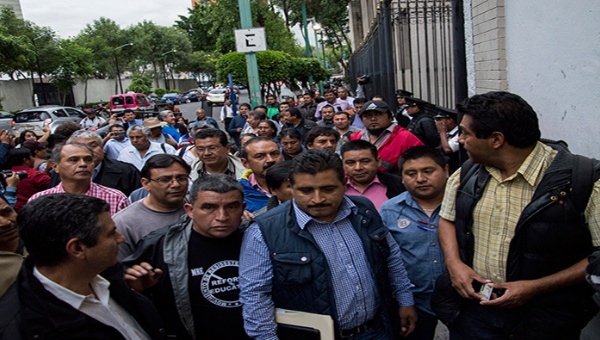
The CNTE teachers have scaled up their strikes despite threats of layoffs and police force. (Photo: Cuartoscuro)
The 200,000-member national union CNTE, demands that neoliberal education reforms — including mandatory teacher evaluations they slam as punitive and unresponsive to needs in rural areas — be cancelled in exchange for an overhaul to improve public education.
On July 13, the Minister of Education, Aurelio Nuño Mayer, accepted to make a revision on the reform considering to improve implementation of evaluations and make them more context-specific, focusing on its application, the platform for publishing findings, cleaning up databases, accreditation of evaluators, and communication between the school and the teacher. Nuño Mayer said he will also expand the curriculum and raise the teacher’s salary by 3.5 percent.
And on July 16, President of Mexico, Enrique Peña Nieto, publicly recognized the possibility of an open legislative debate regarding the education reform, after the fierce opposition from the teachers all over Mexico.
It seems that, if the federal government does not give in to the demands of teachers, blockades, marches and demonstrations will continue in various parts of the country by 2018, presidential election year, and this could deteriorate the Peña Nieto’s PRI even more in the eyes of public opinion.
TYT newsroom

